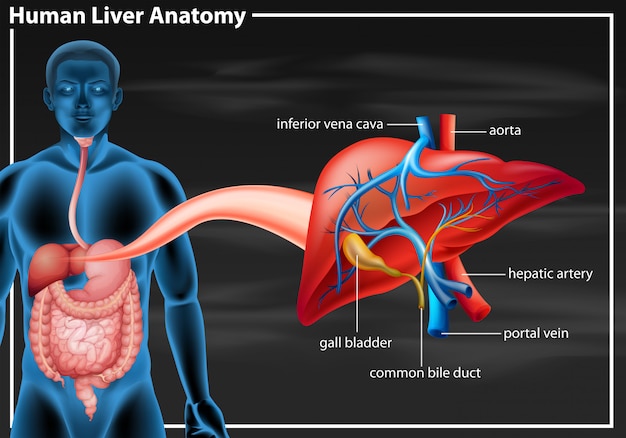Human Liver Anatomy And Physiology Biology Diagrams
BlogHuman Liver Anatomy And Physiology Biology Diagrams Fortunately, the liver has an incredible capacity for regeneration of dead or damaged tissues; it is capable of growing as quickly as a cancerous tumor to restore its normal size and function. Anatomy of the Liver Gross Anatomy. The liver is a roughly triangular organ that extends across the entire abdominal cavity just inferior to the diaphragm.

GENERAL ANATOMY. The liver is the largest organ, accounting for approximately 2% to 3% of average body weight. Ishizaki M, Nemoto M, et al. Close relation between the inferior vena cava ligament and the caudate lobe in the human liver. J Hepatobiliary Pancreat Surg. 2007;14(3):297-301. doi: 10.1007/s00534-006-1148-7.

Anatomy, Abdomen and Pelvis: Liver Biology Diagrams
Learn about the liver's location, structure, blood supply, and functions. The liver regulates most chemical levels in the blood, produces bile, and metabolizes drugs and nutrients.

Anatomy of the Liver. The liver is reddish-brown and shaped approximately like a cone or a wedge, with the small end above the spleen and stomach and the large end above the small intestine. The entire organ is located below the lungs in the right upper abdomen. It weighs between 3 and 3.5 pounds.
.jpg)
Wikipedia Biology Diagrams
Liver Anatomy). The quadrate lobe is located on the inferior surface of the right lobe. The caudate lobe is located between the left and right lobes in an anterior and superior location. The liver is the largest gland in the body and is ideally located to receive absorbed nutrients and detoxify absorbed drugs and other noxious substances. It

Learn about the liver, the largest gland in the human body, and its position, structure, and neurovascular supply. Explore the anatomical lobes, ligaments, recesses, and vessels of the liver with diagrams and 3D models.
